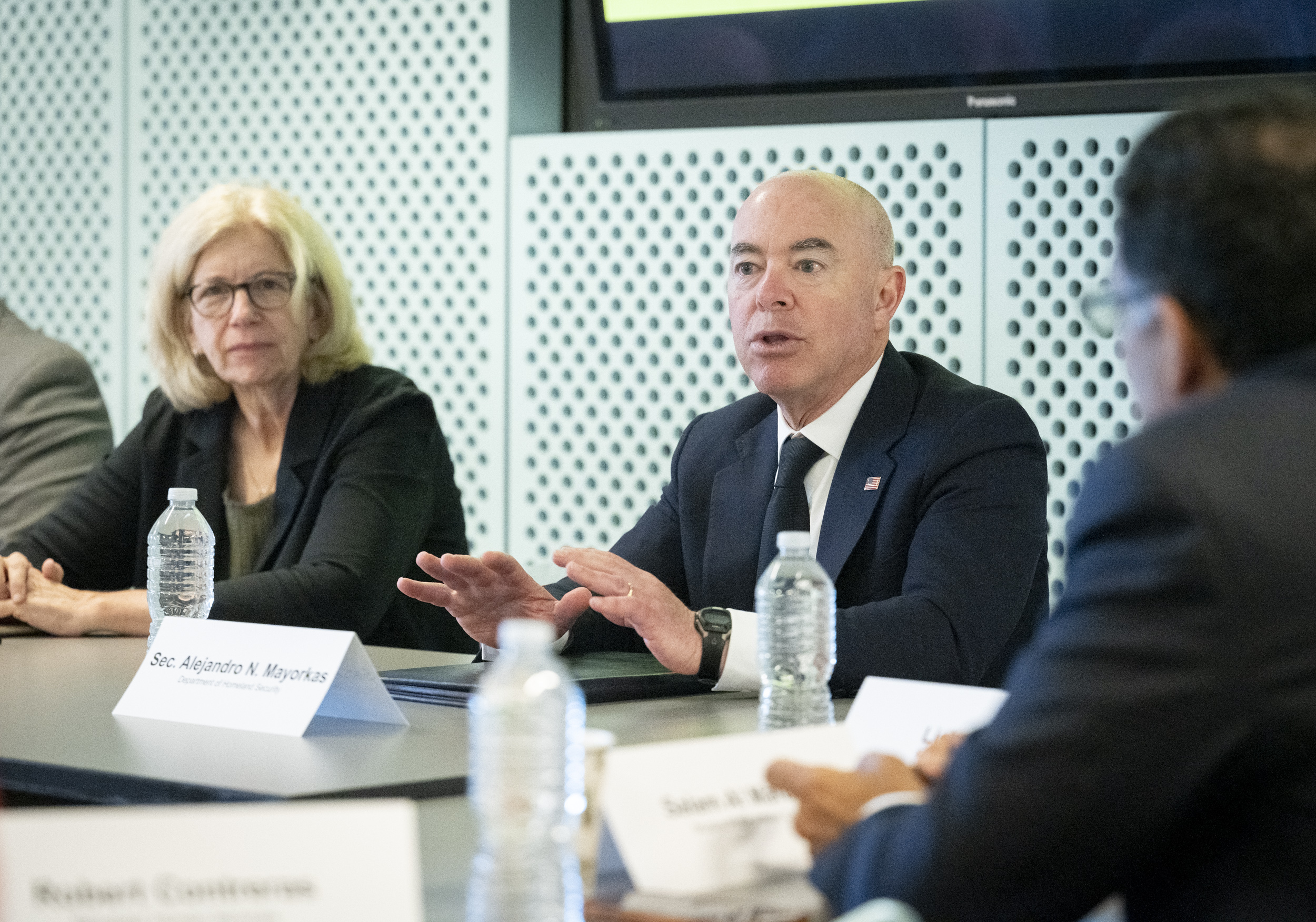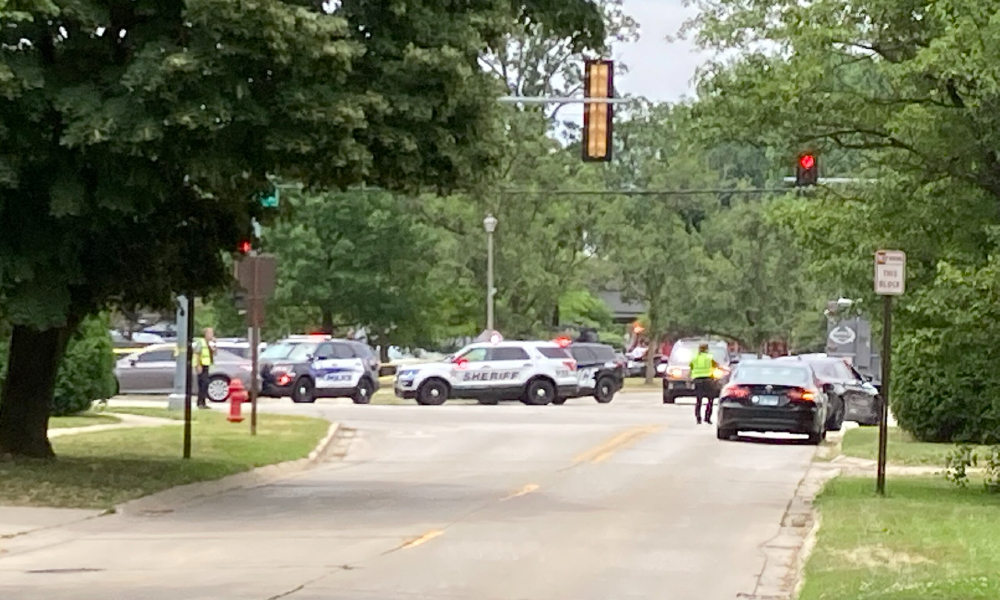The Evolution of Critical Infrastructure Targeting by Violent Extremists
A summary of the GWU Program on Extremism report investigating critical infrastructure attacks from domestic violent extremists and homegrown violent extremists since 2016.

Published by The Lawfare Institute
in Cooperation With

As the United States grapples with a fractured violent extremist landscape and the rapidly approaching midterms this fall, threats to critical infrastructure by a range of actors have metastasized significantly and grown more palpable. While violent extremists’ targeting of critical infrastructure is far from a new phenomenon, multiple federal agencies and law enforcement have levied warnings about the threat in 2022. Little comparative research, however, addresses critical infrastructure targeting within the broader trends in the evolution of violent extremism in the United States. The rise of actors motivated by accelerationism, as well as the continued threat of lone-actor violent extremists with access to online instructional material related to critical infrastructure targeting, have posed a significant challenge for U.S. security officials and practitioners—one that demands renewed attention.
Critical infrastructure has been a central component of the U.S. national security apparatus since 1996, when the U.S. government first formally addressed it within Executive Order 13010, which established the President’s Commission on Critical Infrastructure Protection. The U.S. Department of Homeland Security (DHS) defines critical infrastructure as “assets, systems, and networks, whether physical or virtual, [that] are considered so vital to the United States that their incapacitation or destruction would have a debilitating effect on security, national economic security, national public health or safety, or any combination thereof.” The Cybersecurity and Infrastructure Security Agency (CISA) distinguishes 16 specific sectors of critical infrastructure, including commercial facilities, emergency services, government facilities, and nuclear reactors. DHS has warned repeatedly of heightened threats against various types of critical infrastructure from U.S.-based violent extremists.
Multiple studies conducted over the past two decades point to violent extremists’ escalating attraction to targeting critical infrastructure within the U.S., with one finding over 2,000 terror attacks between 1970 and 2015. While these studies have provided a useful framework to assess the historical prominence of critical infrastructure targeting, recent years have witnessed a lack of robust comparative studies on the evolution of the threat. Concerningly, this has come at a time of increasingly frequent warnings from the U.S. government. As recently as June, a DHS National Terrorism Advisory Bulletin emphasized significantly expanded risks posed against critical infrastructure, especially the energy sector, by domestic extremists within the past five years.
In an attempt to investigate the evolution of critical infrastructure targeting and address the recent gap in the comparative literature, George Washington University’s Program on Extremism published a report in September investigating critical infrastructure attacks in the U.S. from 2016 to the present day, with special attention to CISA’s standing definition and infrastructure sectors. As the domestic threat landscape has evolved over the past six years, homegrown violent extremists (HVEs) and domestic violent extremists (DVEs) are inextricably involved in the threat against U.S. critical infrastructure. A 2021 intelligence assessment by the Office of the Director of National Intelligence assessed racially and ethnically motivated violent extremists as the most lethal of DVE movements, while Salafi-jihadist actors were the most lethal of HVE movements during the period of the study. Therefore, our report elected to investigate this pair of extremist movements targeting critical infrastructure. Of the 35 recorded cases of white supremacist and Salafi-jihadist actors in our report, the movements diverged significantly in regard to target selection: Salafi-jihadists focused on commercial facilities, government facilities, and emergency services sectors, while white supremacists most frequently targeted the energy sector. Each movement’s separate motivations to attack and processes of selecting targets, as well as individual case sector breakdowns, were analyzed to better understand the scope of the threat to critical infrastructure moving forward. The report concluded that while Salafi-jihadist violent extremist actors more frequently plotted against U.S. critical infrastructure compared to their white supremacist violent extremist counterparts, white supremacist attack plots have increased significantly since 2019.
White supremacists’ and Salafi-jihadists’ target selection infrequently overlapped in infrastructure sectors, indicating that each movement identifies separate, larger adversaries and, therefore, separate attack strategies; Salafi-jihadists blame the West for most societal injustice, while white supremacists identify diverse communities and minority populations as the enemy. Salafi-jihadists recorded the highest number of attacks between 2016 and 2017, largely against commercial facilities and government facilities. Such actions are in line with Salafi-jihadists’ historical draw toward counterforce operations targeting government, military, and law enforcement hubs, which stems from their perception of fighting an entrenched conflict with the West. White supremacists, by contrast, tend toward countervalue operations that target infrastructure that will impact specific groups and individuals within society, such as individuals of diverse racial and ethnic backgrounds. While both movements have plotted a comparable amount of transportation system attacks, this was the exception. Even within the recorded transportation attack plots, white supremacists directed attacks toward roads and highways as one step in a campaign of violence, while Salafi-jihadists more frequently targeted mass transit and public transportation infrastructure as the main operational target.
White supremacist actors aim to conduct multiple acts of terror over a longer period of time to incite civil unrest and dismantle the functioning of the government and, as such, view critical infrastructure attacks as vital steps in destabilizing societal functioning. Unlike their Salafi-jihadist counterparts, white supremacists envision their acts of terror as the beginning stage, not the final stage, of their activity on behalf of the movement.
Such attacks against critical infrastructure, including the energy sector, have even increased in frequency between 2020 and 2022 and mirror the rise in visibility of white supremacist actors adhering to accelerationist doctrines. Accelerationist neo-Nazi movements like Atomwaffen and the Base, as well as disparate cells of white supremacists, seek to conduct attacks with the goal of hastening societal collapse. As critical infrastructure damage may be highly detrimental to U.S. national security, public health, and safety, it is therefore a prime target for white supremacist violent extremists, a trend that must be considered in prevention and mitigation efforts going forward.
The energy sector, which includes electrical transformers, substations, power lines, the energy grid, and even nuclear reactor sites, is the lifeline of all other critical infrastructure sectors. Its functioning enables all other sectors’ operations and is a clear consideration for domestic violent extremists; over the past six years, 87 percent of recorded white supremacist attacks on critical infrastructure targeted energy infrastructure. As recently as February, the Department of Justice charged three individuals with conspiring to provide material support to terrorists for plotting to attack multiple electrical substations with power rifles to trigger mass unrest through power outages, all in the hope of bringing about an eventual race war. They also distributed white supremacist propaganda, federal agency reports on the energy grid, and lists of energy infrastructure throughout the U.S. to fellow white supremacists. The dispersed nature of energy substations throughout the U.S., coupled with mixed infrastructure ownership between the public and private sectors, potentially broadened the sectors’ vulnerabilities and provided a relatively softer target for the three plotters. This mirrors other accelerationist attack plots against critical infrastructure—with each successful attack viewed as a spark for a series of cascading violence aimed at degrading Western society. In particular, this foiled plot highlighted the importance of target hardening and protecting the electrical grid.
Newer generations of neo-Nazis and white supremacists latch onto previous extremist literature and propaganda during their radicalization processes, which contain examples, instructional material, and calls to action for targeting various critical infrastructure sectors. Multiple accelerationist groups first emerged from an online forum called Iron March, which became a pressure cooker for white supremacists and other domestic extremists to form accelerationist ideals through mobilizing concepts. Mobilizing concepts allowed white supremacist narratives to transcend domestic extremist group divides. Other well-known neo-Nazi propaganda pieces, such as James Mason’s “Siege” and William Luther Pierce’s “Turner Diaries,” have not only become cornerstone “must reads” for neo-Nazis during the past six years but also contained specific instructions on critical infrastructure attacks, including targeting the energy sector. Newer propaganda manuals disseminated through neo-fasciest Telegram channels and entitled “Terrorgram” share structural blueprints and vulnerabilities of cell towers, power grids, and various other infrastructure strewn throughout the U.S., with aggressively loaded language pushing readers to act. White supremacist virtual propaganda is often quite challenging to regulate thoroughly to counter extreme narratives, making proactive security measures even more vital for protecting infrastructure. Such security measures include increasing the physical protection of critical infrastructure sites through technological updates and sufficient access controls, in addition to other target preventative hardening tools. Additional governmental review and awareness of the newest extremist propaganda that discusses critical infrastructure vulnerabilities, published by both DVE and HVE groups, will better inform practitioners of the current state of extremist organizational learning and therefore present the opportunity to keep up with evolving threats.
In contrast, Salafi-jihadists often aim to commit acts of terror to inflict harm and psychological trauma on mass populations; therefore, they are drawn to attacking critical infrastructure sites that are gathering places for many civilians. Our report echoes this, as Salafi-jihadists attacked more commercial facilities, emergency services, and government facilities than did white supremacists in the United States. Generally, government facilities are considered “hard” targets with increased protection and extensive barriers to entry; while some scholars emphasize that terrorists are more likely to elect softer targets when evaluating their perceived operational and organizational capabilities, others have indicated their symbolic nature as the structure of U.S. society enhances their attractiveness as targets. Simultaneously, Salafi-jihadists may consider critical infrastructure as viable targets far more often than other extremist actors, as they tend to consider a wider scope of targets overall than white supremacists. Just in 2021, two homegrown violent extremists were charged with plotting to attack the U.S. Military Academy at West Point. As the military is seen by many citizens as a protective force for maintaining U.S. sovereignty, safety, and security, a potential attack on military infrastructure could cause casualties and inflict psychological trauma while shattering civilians’ perceived safety. While the West Point attack was foiled, further research into target hardening and countering extremist messaging is critical to prepare for—and hinder—future attacks against government facilities.
Parallel to domestic violent extremists, Salafi-jihadist propaganda and materials virtually flow from terror organizations such as the Islamic State and al-Qaeda to provide radicalizing individuals with constant ideological reinforcement and encouragement to attack the West and knowledge of how to do so. The Islamic State’s Dabiq and al-Qaeda’s Inspire magazines combine instructional material for how to attack the West with extreme messaging designed to convince readers to avenge societal and religious injustice with violent responses. Multiple individuals charged with providing material support to the Islamic State, including New York City resident Awais Chudhary, were first radicalized after viewing magazine and video propaganda materials before preparing critical infrastructure attacks for Salafi-jihadist organizations. As further manuals are released, U.S. federal authorities should continue to closely monitor propaganda narratives to address extremists’ suggested infrastructure targets and security vulnerabilities.
Threats to critical infrastructure stem from both DVE and HVE movements; therefore, the U.S. public and private sectors must consider the most effective strategies to protect critical infrastructure and combat the spread of diverse extremist ideologies. Both Salafi-jihadists and white supremacists use organizational learning to develop circumvention techniques when targeting critical infrastructure security, rendering dated infrastructure security less effective. Federal agencies and the private sector must continue to build partnerships and enlist target hardening updates as prevention measures to mitigate future extremist attack plots. Even so, expanded research is essential to assess the critical infrastructure risk proposed by other movements within DVE and HVE communities. This includes conducting further comparative investigations into groups that the U.S. government currently considers less lethal than Salafi-jihadists and white supremacists, but that still pose immense threats to U.S. society and infrastructure. Finally, with the alarming rise of white supremacists who adhere to accelerationist doctrines, increased resources and federal agency attention are necessary to combat the long-term violent actions and extreme schools of thought posed by domestic extremists. As the U.S. society becomes more polarized and witnesses increasing threats from within our borders, distinct attention must be given to countering extremist narratives and protecting critical infrastructure, the bedrocks that allow our society to function smoothly and safely.





